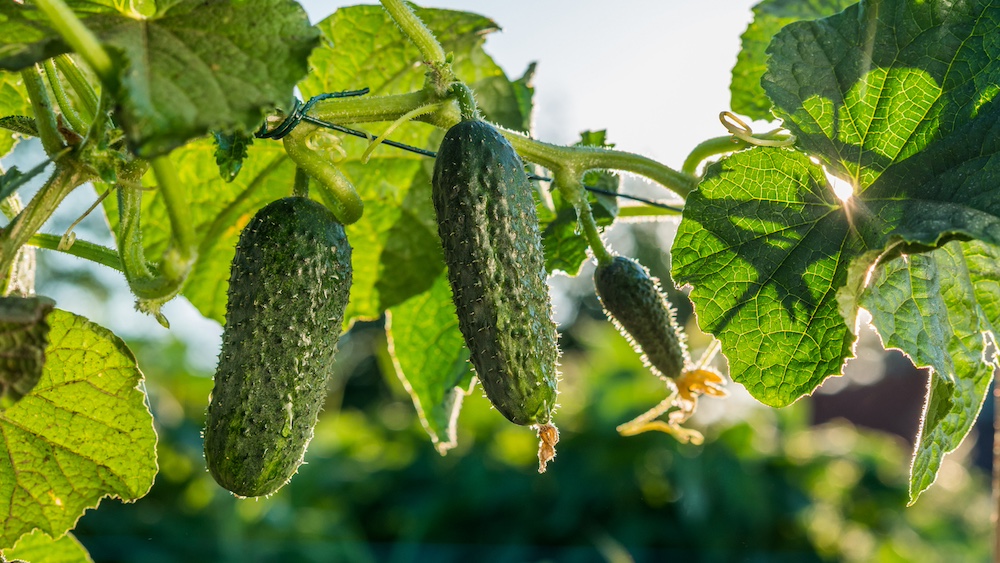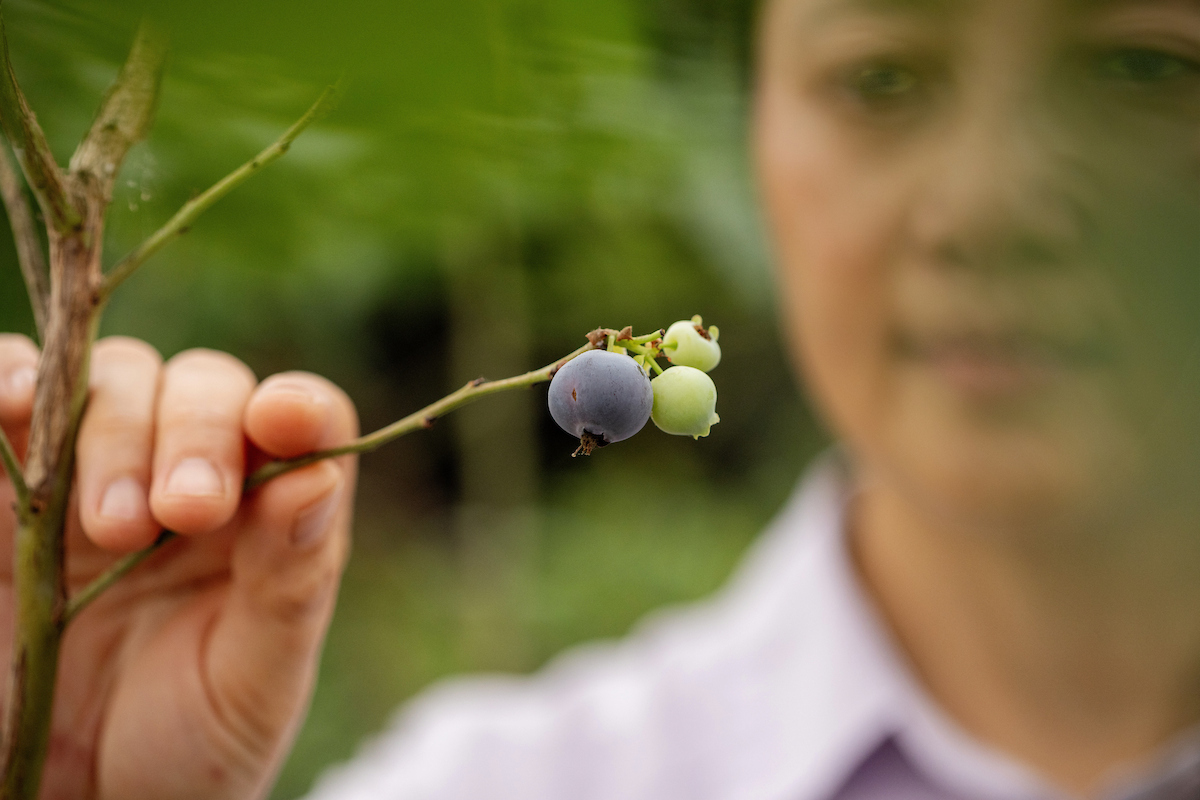
Changing weather patterns are influencing cropping systems and where certain crops can be successfully grown.
Researchers in the University of Georgia’s College of Agricultural and Environmental Sciences (CAES) recently published a study in the journal Sustainability examining the feasibility of expanding fresh vegetable production in Georgia as increased temperatures and more frequent and extreme droughts threaten producers in the Western United States.
“The Southeastern U.S. is a prime candidate for expanding vegetable production in response to reduced yields in the West,” said Jeff Mullen, associate professor in the Department of Agricultural and Applied Economics.
Preparing for agricultural shifts
In anticipation of probable climate variability, Mullen, lead investigator on the project, said the research team explored the consequences of water withdrawals and water quality, as well as risks to different ecological categories, of a shift from row crop to vegetable production in the Southeastern U.S.
Using the Decision Support System for Agrotechnology Transfer (DSSAT), researchers estimated irrigation water requirements for the row crops under varying climate and weather conditions, pest pressures, fertilizer regimes and planting strategies.
DSSAT projects daily plant growth and water needs over the course of a season, depending on weather and crop management activities. The UGA research team used historical local weather data from the U.S. National Oceanic and Atmospheric Administration (NOAA) over a 72-year period from 1950 through 2021 for their initial DSSAT runs. The study examined four major row crops — corn, cotton, peanuts and soybeans — grown in Georgia’s Lower Flint River Basin (LFRB).
To compare expected water use on row crops with vegetable crops, researchers used data collected through UGA Cooperative Extension farmer surveys in which farmers self-reported irrigation volume applied to vegetable crops between 1992 and 2008. They also compared U.S. Department of Agriculture irrigation application rates on vegetable fields from farm surveys between 2003 and 2018.
With those data, the research team was able to demonstrate the additional expected irrigation water withdrawals needed for vegetable crops compared to row crops. Depending on the weather, an acre of vegetables requires between 70% and 100% more water than corn and between 200% and 300% more water than cotton and peanut.
“I've been curious about what would happen if there was a shift in cropping patterns because of climate change. About four years ago I had a student, Mary Kate Rubin, who was studying for her master’s in agribusiness. She was interested in this topic,” Mullen said. “We decided to study this for Georgia to see what would happen if there was some shift in agriculture, particularly from the Central Valley of California, which is getting hammered in every respect — floods, wildfires, extensive droughts.”
Because so much of the nation's produce is grown in that area, changing climate could have a significant impact on future production and future prices.
Water stress in California's Central Valley

“When you think about how the effects of climate change are likely to be distributed across United States and around the world, it looks like California is in for a lot of hurt. On top of the tenuous nature of water they import from the Colorado River, they're heavily reliant on snow melt from the mountains. When you start getting warmer winters then you get less snowpack,” Mullen said.
While good years are possible — 2023 and 2024 both recorded above-average snowpack after more than a decade of unusually dry years — recharging some of the state’s aquifers, Mullen said such boon years would be the exception rather than the rule.
“These droughts are more likely to be the status quo, so the sustainability of continuing to grow these water-intensive vegetable crops in that area is going to be challenged in a low-water environment,” he added. “If we start seeing big yield impacts in the West on fresh produce, we'll see prices start ticking up and people in these wetter areas of the country are going to be more and more interested in getting involved in that market.”
Most of Georgia’s vegetable crops are grown in south Georgia, which is also at risk for drought, but is projected to see slightly higher than average annual rainfall as the climate continues to warm, Mullen said.
If production levels decline in California and vegetable prices begin to rise elsewhere, producers in the Southeast may become interested in expanding into vegetable production. This study was designed to use science-based information to provide insight into how the environmental impacts of agricultural production in Georgia would change with a shift from row crops to vegetable production.
“It’s a lot of work to change the way that you farm, so there is a little bit of inertia in the cropping system that we have, but once prices start pushing up enough, then people get more and more interested,” Mullen explained. “Over the last 20 years, there hasn’t been a lot of increase in vegetable production in Georgia, but that could change if vegetable prices rise faster than row crop prices.”
Addressing the demands of increased vegetable production
Because vegetables have higher water requirements than row crops, an increase in vegetable production in south Georgia would increase pressure on the state’s hydrologic system, both groundwater and surface water resources.
“In south Georgia, where a lot of irrigated agriculture is grown, the aquifers are really tightly connected to the streams,” Mullen said. “When you draw down the aquifers, you see stream flows go down and vice-versa. When the aquifers get filled up, you see the stream flow rise. If we were to shift to more water-intensive crops, then that would put more pressure on the aquifers but also on the streams. Vegetables are a lot more water-intensive than the cotton, corn, peanuts and soybeans that we currently grow.”
The study also examined how production inputs such as fertilizers and pesticide applications would change and the potential ecological impacts.
"Inputs would be significantly different for vegetable production than the major Georgia row crops. In particular, the pesticide regime is different since they have different pest pressures. Farmers use pesticides judiciously but inevitably, there are some negative impacts on off-farm ecology and non-target species. As the pesticide regime changes with crop choices, those impacts will also change. As an example,” Mullen said.
“If we can anticipate how the pressure on water resources and the ecological risks of pesticide use would change under new cropping patterns, then we can prepare better water policy and risk management responses if cropping patterns do change. Investigating the impacts of alternative agricultural production scenarios will allow us to more nimbly adjust our extension and policy resources to meet future challenges.”



.jpg)


